Specter Ops is one of the most visually appealing board games on the market, and in this guide, I’m going to cover everything you need to know about it, including how to play and – most importantly – how to win.
It doesn’t necessarily have the broad appeal of some other board games like Monopoly, but if you’re into the sci-fi genre and enjoy games that rely on stealth, Specter Ops is well worth your consideration.
The game itself is as tense as it is well-designed, with a stunning board and detailed plastic miniatures representing agents and hunters.
Will you be able to hunt down the infiltrator who stalks your every move through a secret map? To do so, you’ll need to use your unique abilities, your wits, and whatever technology is available to you. If all of that sounds exciting, keep reading to learn more about this epic game.
Specter Ops: an Overview
Specter Ops was created by Emerson Matsuuchi and is published by Plaid Hat Games. It was first released in 2015 and has become a firm favorite with gamers.
Unfortunately, despite being nominated for Best Thematic Board Game by Golden Geek the year of its release, Specter Ops didn’t manage to win the award. Nevertheless, there are many excellent details about the game that have helped its fan base grow.
It has been compared to other games like Scotland Yard, and with good reason. Both games aim to catch a mysterious person – an agent in one, a criminal in the other – but the newer game incorporates the current popularity (both on the big screen and in gaming circles) of the sci-fi genre.
In Specter Ops, one player takes on the role of the ARK agent who has successfully infiltrated the abandoned pharmaceutical facility of Raxxon Global in an attempt to uncover sensitive information about the company’s past.
As the agent, you get to choose from four characters who each possess a unique gift.
Meanwhile, the other players are Raxxon hunters – humans who have been mechanically or genetically enhanced to track down ARK agents before they can cause any severe damage to Raxxon.
Design of the Game
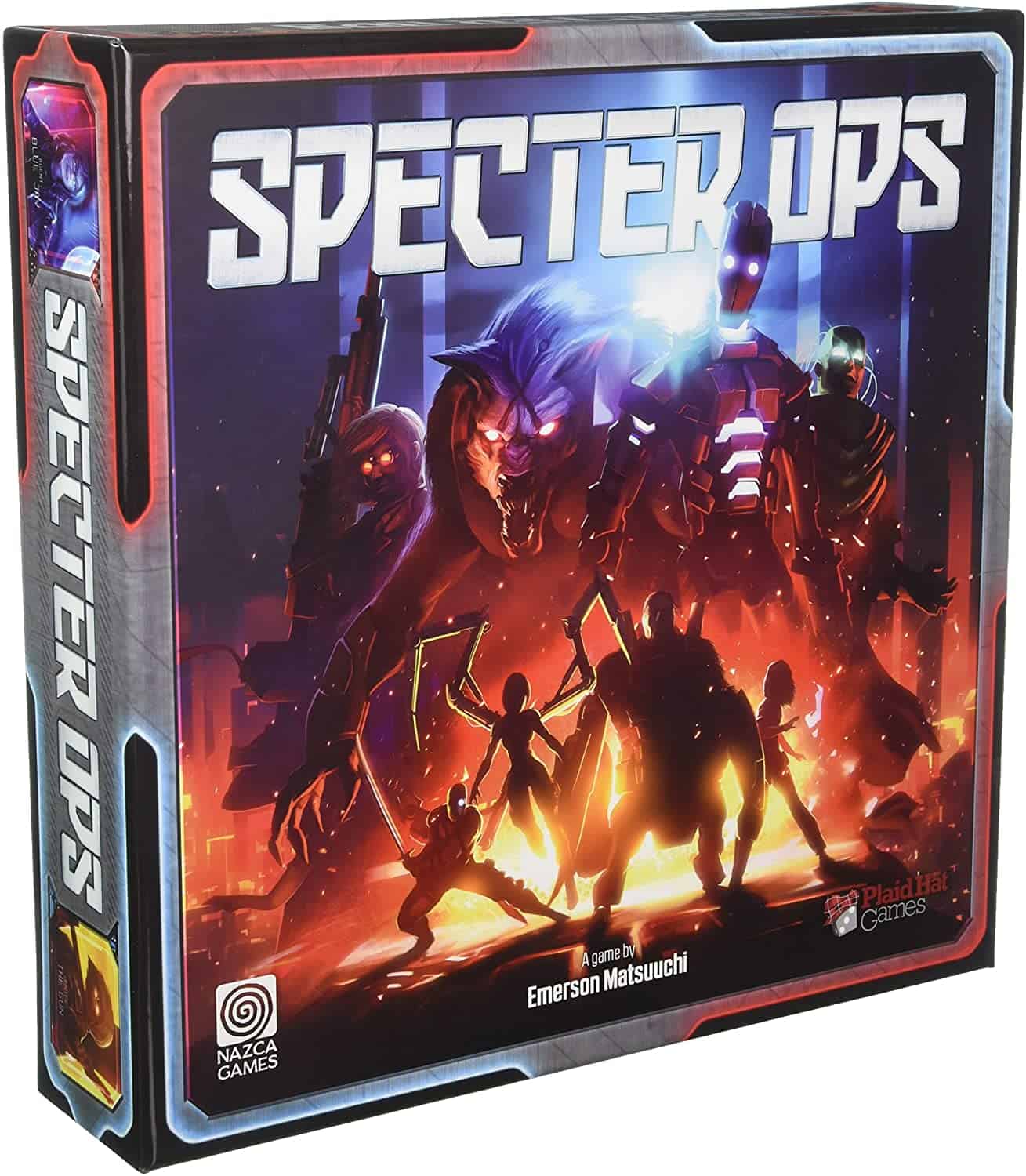
A guide to Specter Ops wouldn’t be complete without at least a brief mention of the game’s outstanding design.
One or two people have critiqued the game for prioritizing style over practicality – for example, some reviewers cite the small numbers on the board’s grid which are challenging to see in low-light settings – but these are relatively small concerns.
Ultimately, the board manages to be exciting in a way that few others do – who needs low mood lighting when the board itself seems to be illuminated in various places by a colorful fluorescent glow?
Not only is the board beautifully designed, but the plastic pieces also demonstrate a level of detail that conveys the designer’s wish to go above and beyond.
The premise of the game itself is tense enough thanks to the need for stealth; every aspect of its visuals is aligned with that same feel.
Another game with a stunning design that I’d recommend is Sleeping Gods – you can read our guide to Sleeping Gods here.
How to Play Specter Ops
Find out how to secure victory whether you’re playing as the agent or a hunter. This section is based on a game consisting of 2-3 players.
Setup

First of all, you need to decide which player is going to be the ARK agent – the other players will be Raxxon hunters.
Then, follow these steps:
- Unfold the board and place it in the middle of all players
- Make separate piles of each type of token.
- The hunters must decide which vehicle to use. They then need to place the vehicle card to the side of the game board and the token on K17.
- Decide the locations of the four mission objectives by rolling the die, circling the locations on the mission sheet, and placing mission markers on the corresponding board spaces.
- If you’re playing with three people, each one chooses a hunter and places the correct figure on the vehicle card (with two people, the hunter selects two hunters to play)
- Next, the agent player must choose an agent without showing the other players.
- The agent player takes all the equipment cards and selects 3 in secret to set down in front of him or her before placing the rest back in the box.
- Shuffle the supply equipment cards
- It’s recommended that you should limit each player’s turn to 2 minutes.
Playing as the Agent
The game is always started by the agent player whose aim is to complete any three of the four mission objectives and reach an escape point before the time is up.
Movement
Rather than moving the agent piece on the game board, which would give away the agent’s identity, this player must instead track his or her movements by writing on a movement sheet. No other players are allowed to look at the sheet.
The agent begins on space M1 and can move from 0-4 spaces. However, the agent can’t move on too or through a space that’s already occupied by a hunter.
Being spotted
If the agent lands on a space that is in the line of sight of a hunter, he or she must place a visible marker on that space. Even if the agent moves through a visible area but does not end up in the line of sight, a visible marker must be placed in the last space where the agent was visible from.
Equipment cards

The agent player can use an equipment card before or after moving. The effect of the card is described on it, as is the number of times the card can be used.
Supply caches
Six supply caches are located at various points around the board. At the start of the agent’s turn, if he or she has access to a supply cache, then the agent can draw an X on the movement sheet in that location and draw a card from the supply deck.
The agent player may only use each supply cache once within a game.
Mission objectives
To successfully complete a mission objective (there are 4 in total), the agent has to start a turn adjacent to that objective.
If a turn is started adjacent to a blue Raxxon mission objective, it can be turned over to its red ARK side to indicate it has been completed.
Escaping and winning
Three mission objectives must first be completed before the agent is able to escape. To escape, he or she has to finish a turn on one of the escape points (there are 3) on the board.
However, if a hunter is on an escape point, the agent can’t use it to escape.
Completing three missions and finding an escape point means that the agent has won.
There are also ways that the agent might lose. For example, the agent begins with 4HP. If all hit points are lost, the agent loses. He or she also loses if the game reaches round 40 without a decisive victory.
Playing as the Hunter
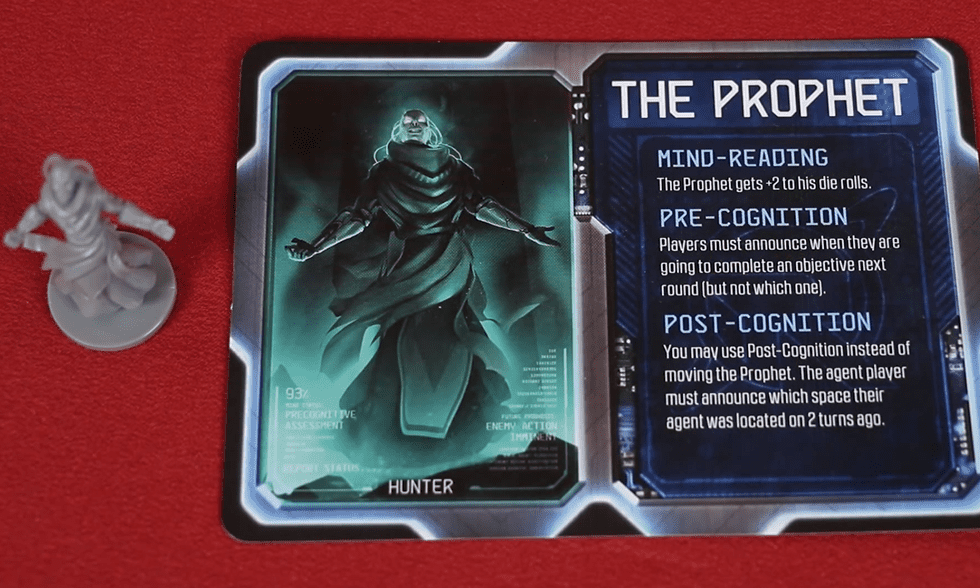
When you play as a hunter, your turn comes after the agent. You can move your hunter around the board and attack a visible agent – your aim is to defeat the agent by either preventing escape by round forty or bringing him/her down to 0 hit points.
Movement
A hunter can move up to 4 spaces but can’t move onto or through any structures.
Vehicle
Hunters begin the game in a vehicle that can only be moved on-road spaces (represented on the board by coordinates that are adjacent to dashed lines). The vehicle can’t be moved more spaces than its move value in a single round.
To enter a vehicle, the hunter should be moved on to the vehicle token, and the figure should be placed on the vehicle card. To exit a vehicle, on the other hand, the hunter figure must be removed from the game card and placed on the game board adjacent to the vehicle token.
Hunters are still able to use their abilities within a vehicle, but they cannot attack. A hunter also can’t be stunned while in a vehicle.
Spotting an agent
After a hunter has moved, the agent player should say “clear” if the agent isn’t visible to the hunter. However, if the agent is visible, then he or she must place a visible marker on the game board.
Making an attack
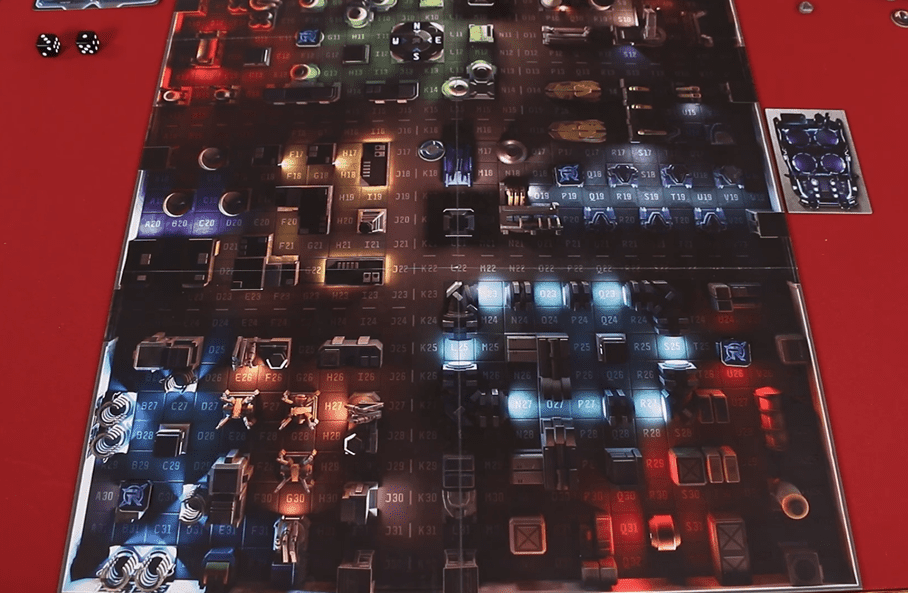
An attack can be carried out after the hunter moves if an agent is visible. To do this, the hunter player should roll the die and count the number of spaces away that the agent is from the attacking hunter.
On a roll greater than or equal to that number, the agent is hit. Every attack inflicts 1 HP of damage.
If a one is rolled, that counts as an automatic miss. Alternatively, if a six is rolled, then the hunter may roll the dice again and add the two numbers together.
Vision
A hunter’s line of sight follows the row and column it is situated on. While there is no range limit, the hunter can’t see through structures.
Being stunned
When a hunter is stunned, a stun token should be placed on the hunter’s character card. During this time, the hunter can neither attack nor use any special abilities and can only move two spaces in a turn.
Winning
The majority of agents begin the game with 4 HP. If an agent loses all HP, the hunter players win. As mentioned previously, if the agent doesn’t complete three objectives and escape before round 40, the hunters win.
Who is Specter Ops for?
Specter Ops is recommended for two to five players aged nine and above. I’d say it’s likely to appeal to a slightly older age group as games can last anywhere between an hour and two hours, which means it can be easy to get bored for some younger children.
The game will definitely appeal to avid sci-fi fans, as well as anyone who enjoys tactical cat-and-mouse games.
How Many Pieces are There in Specter Ops?
Specter Ops contains the following pieces:
- 1x gameboard
- 1x pad of movement sheets
- 4x secret role cards
- 5x hunter figures
- 4x agent figures
- 4x agent character cards
- 29x tokens
- 8x hunter character cards
- 1x dual-sided vehicle card
- 1x sand timer
- 1x 6-sided die
- 17x equipment cards
- 1x rulebook
Alternatives to Specter Ops
Here are a few alternative games I’d recommend.
Scotland Yard
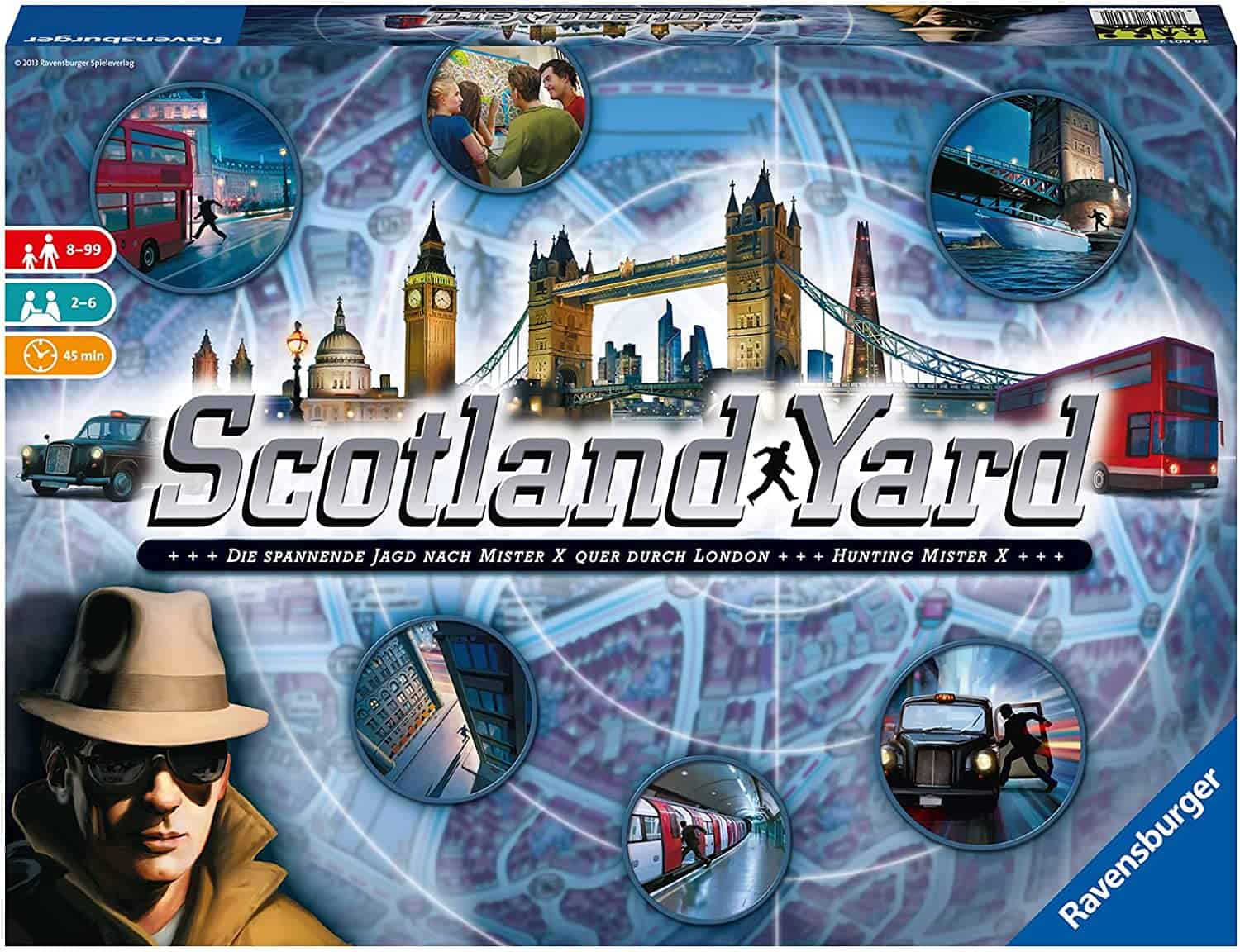
For anyone who likes the setup and gameplay of Specter Ops but doesn’t enjoy the sci-fi theme, Scotland Yard is an excellent alternative option. In it, the criminal mastermind known as Mister X has escaped from Scotland Yard, and it’s up to you as one of the metropolitan police’s top detectives to catch him.
- Players – 2-6
- Recommended age – 8+
- Playing time – 45 minutes
Cosmic Encounter Duel
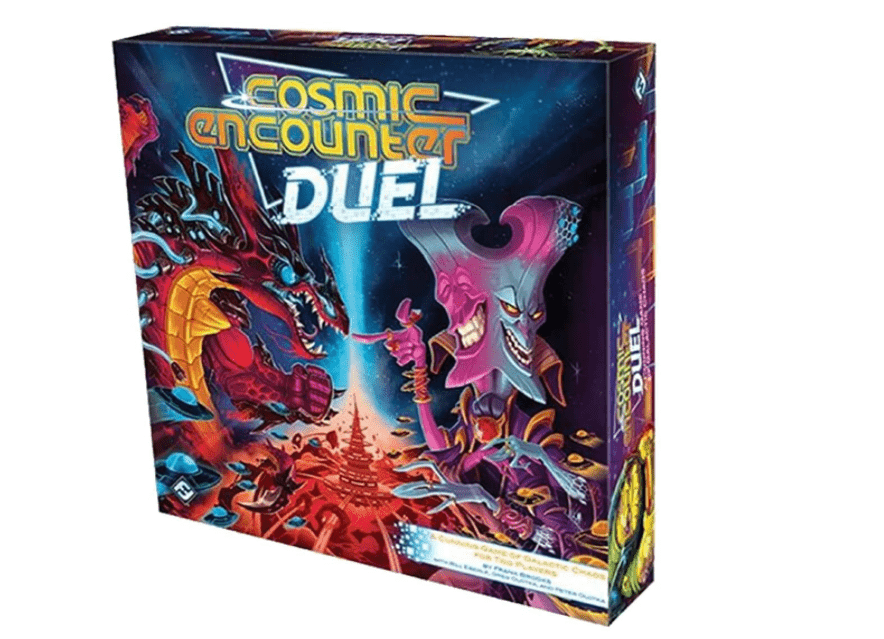
Cosmic Encounter Duel is a wacky sci-fi game that’s immensely fun to play, so if you want something that’s a little more lighthearted than Specter Ops, it’s worth considering. Go head-to-head with your opponent to win control of five different planets, but beware! There are plenty of obstacles to get in your way.
- Players – 2
- Recommended age – 14+
- Playing time – 60 minutes.
Specter Ops – is it Worth Buying?
While I’m not the biggest sci-fi fan in the world, the style and quality of this game undoubtedly won me over from the moment I set eyes on it, and as soon as I started playing, I was hooked.
The idea of tracking down a wanted person has been tried and tested many times in board games – remember Scotland Yard? – but it doesn’t feel tired or overdone. In fact, Specter Ops brings new life to the idea by transporting it to a foreign, alien world.
I won’t be the first to complain that the game can be overly long, but it’s possible to prevent it from dragging on by using the two-minute sand timer, so this is really only a minor issue.
Ultimately, Specter Ops is an intense game with excellent visuals that I would recommend (if you’ve got a couple of hours to spare).
Frequently Asked Questions
Question: How long does it really take to play Specter Ops?
Answer: Without using the two-minute sand timer, you’re probably looking at a couple of hours. Fortunately, the timer cuts it down to about one hour as long as you try to maintain a solid pace.
Question: Where can I buy Specter Ops?
Answer: Specter Ops can be purchased through Amazon here.
Question: Is Specter Ops a family game?
Answer: I wouldn’t recommend Specter Ops as a family game for a couple of reasons. Firstly, the gameplay can get complicated, and it takes too long to finish. Secondly, the theme of the game is quite niche and so isn’t likely to appeal to the whole family.
Instead, why not check out our guide to the best family board games?
Question: What is the role of pets in Specter Ops?
Answer: Some hunters have a pet that is represented by a figure. The pet begins the game in the vehicle. After the hunter has moved, so can their pet. However, the pet can’t drive the vehicle, use a special ability, attack or be stunned.
Recommended reads:
- Stratego Pieces Explained – Must-Know Facts - February 28, 2023
- Wahoo Board Game Guide – AKA Aggravation Guide - February 22, 2023
- Pokemon Monopoly Guide - February 22, 2023

